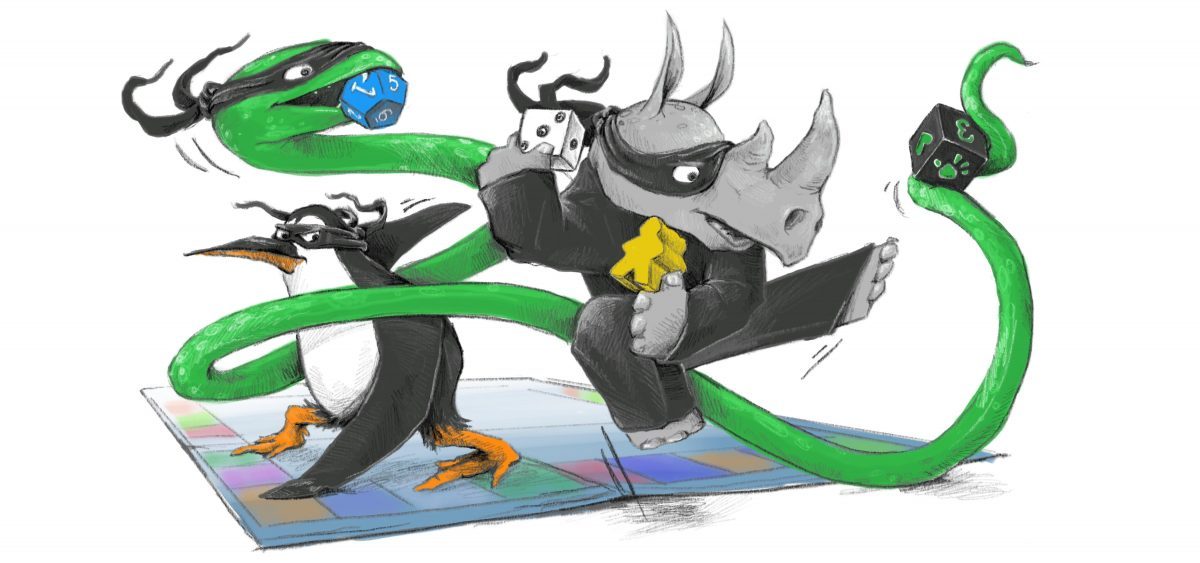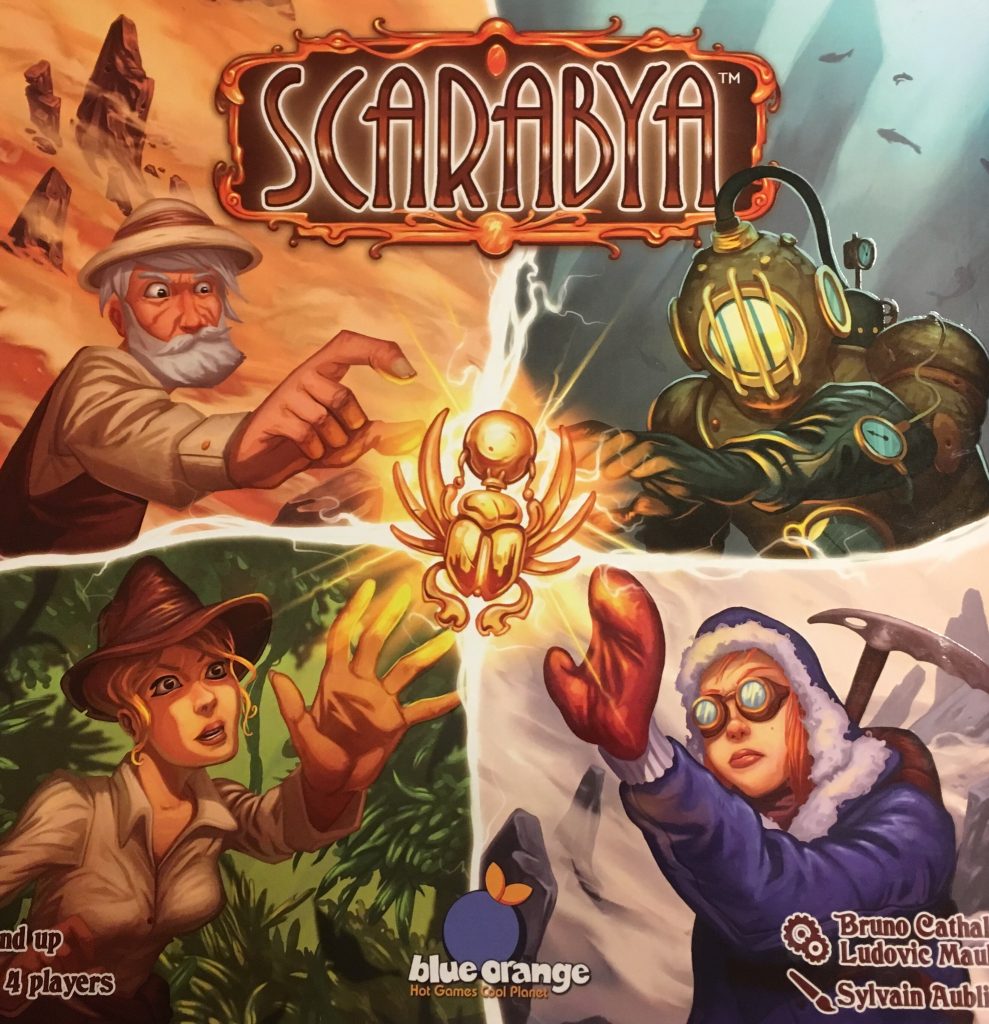So you like puzzle games? Tetris was your jam? Have I got a game for you! Well, ok so it’s not Tetris but it has the same puzzley feel and the same satisfaction when you manage to fit wonky shaped pieces into just the right place. It’s called Scarabya, and you’re gonna love it.
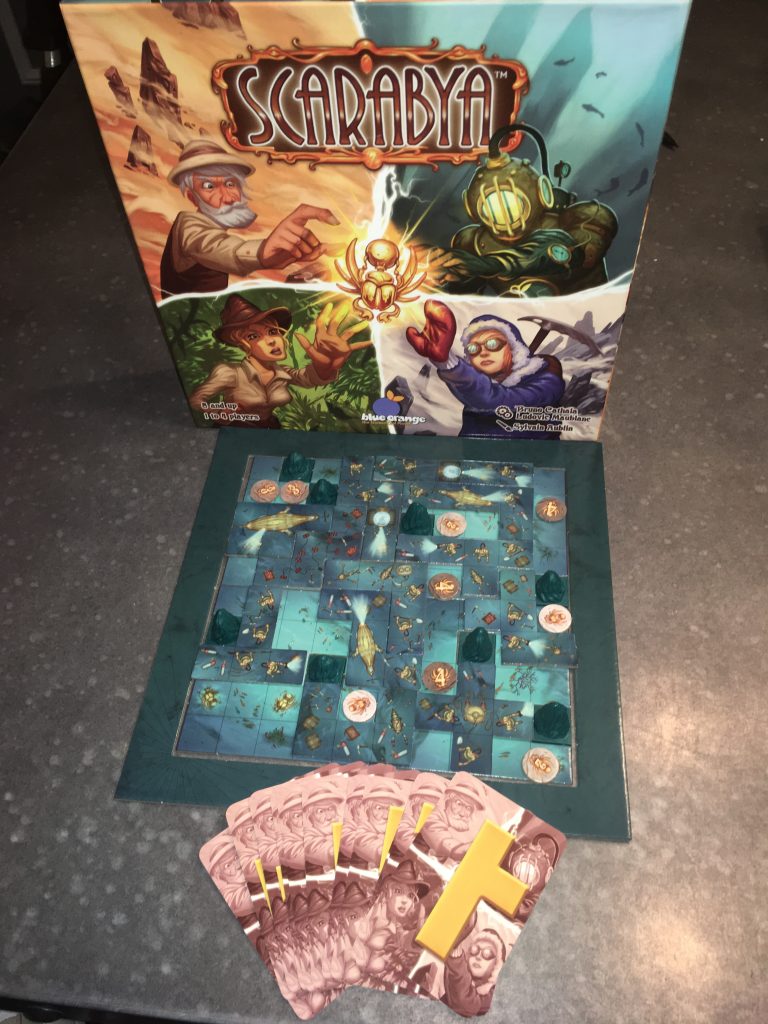
Let’s take a look
Scarabya as you might have guessed is a game about Scarabs. Specifically capturing Scarabs in enclosures for points. Apparently though you are a kind Scarab hunter and want them to have some room to move around in, but not too much. Each of the Scarabs you capture must be contained in a 1, 2, 3 or 4 block enclosure, not more than 4. And, that’s how many points you’ll score. A four block enclosure will score you 4 pts for every Scarab within it. A three block will score you 3 pts and so on. Most points at the end wins.
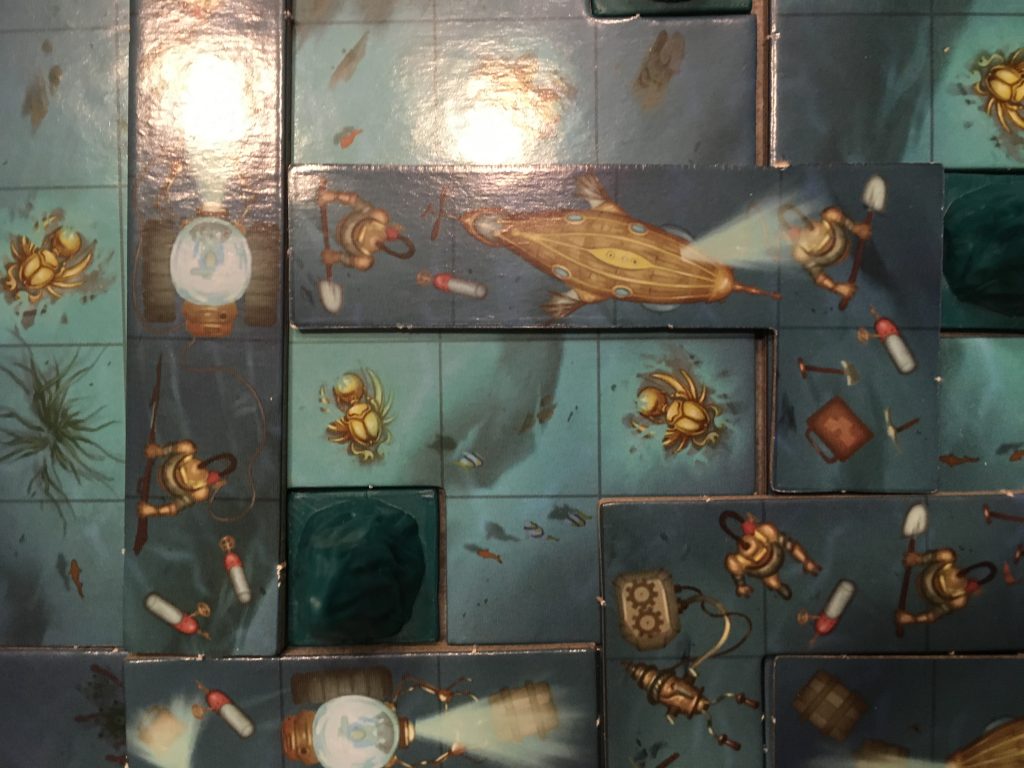
So now that you know the purpose, let’s take a look at the game play.
Everyone in Scarabya will start with a board, that will be exactly like everyone else’s. The boards are modular and are made up of a outer rim and four squarish pieces. One player will arrange the Squares into whatever configuration they want and the other players will copy this exactly on their boards. The Square tiles are different on the front and back to give even more variety from game to game.
Now that everyone’s boards are set, we start placing oddly shaped pieces on our boards all at the same time. Each of these pieces is made up of 5 blocks in all sorts of tetrisy shapes. To make it fair, everyone also has to place the same piece on the same turn. To do this, we draw one of the cards at random from the deck, and it tells us which piece we are placing this turn. Even though each person is playing the same board and the same piece, the outcomes will be different on everyone’s board because, luckily, they aren’t playing with the same brain.
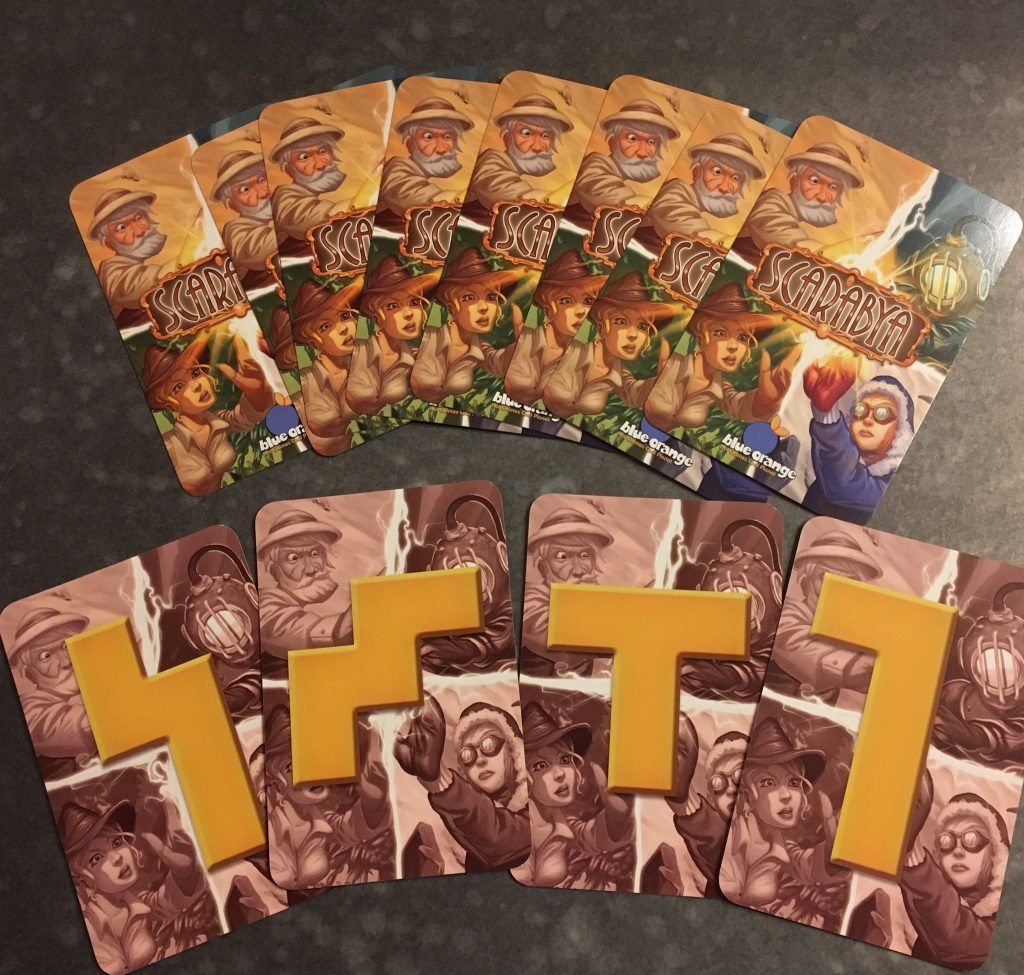
There are really only a few rules to know about piece placement. The first piece must be placed covering one of the four blocks in the very center of the board where the four tiles intersect. All subsequent pieces have to physically touch one of the pieces already played. This has to be actually touching orthogonally, not just points of the pieces touching diagonally. Also, the pieces cannot overlap or hand off the edge of the board. Both the borders of the board and the rocks that go in the empty spaces on the board count as boundaries for the enclosures. Other, than that, good luck.
As you place tiles, you will inevitably have to cover up some Scarabs. Don’t fret, this is going to happen. Your goal is to cover up as few as possible while creating 1-4 block enclosures that contain other Scarabs. As you create these enclosures, you take a point marker worth the appropriate amount of points, and place it on each Scarab you trapped.
If you can play a tile, even if you don’t want to put it where you can play it, you have to. Rules are rules. If at any point you absolutely cannot play a certain tile, you sit it to the side removing it from the game.
After the last card is drawn and everyone places their last tile, the game is over. Count up you Scarab points and the player with the most points wins.
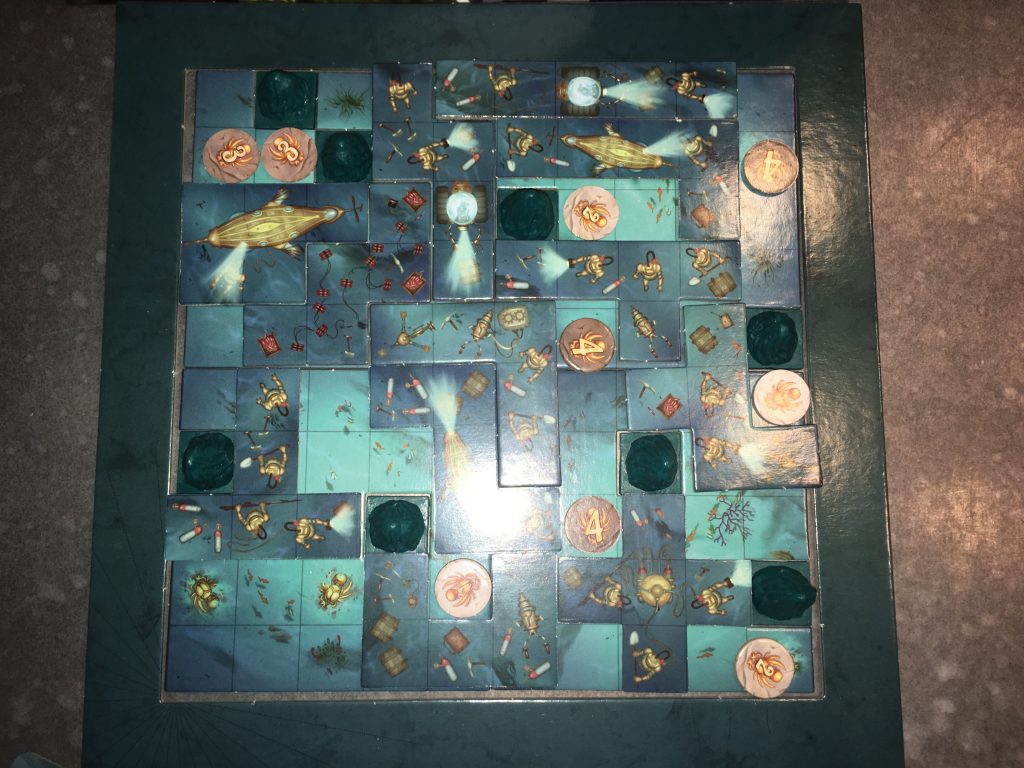
So what do we think?
First off, I really like this game. Not all of my friends agree. But, they are often more interested in heavier games than I am. That being said, who cares? I’m going to keep playing it and teaching it.
I really like that the board is modular, and thus is different every time you play. I also like the challenge of figuring out the best placement of the shape tiles. I was always a big fan of Tetris, so this seemed like a natural fit for me.
I do think there are a couple of things about the game that could have been better. First the components: I feel like the modular board could have fit together a lot tighter, and still left room to disassemble it at the end of the game. The frame is quite a bit bigger than the square tiles that sit within which causes them to move around a lot during the game. This combined with the tile pieces propensity to move around caused me quite a bit of struggle as the game went on. I had to be careful not to jostle things to much and thus ruin my board.
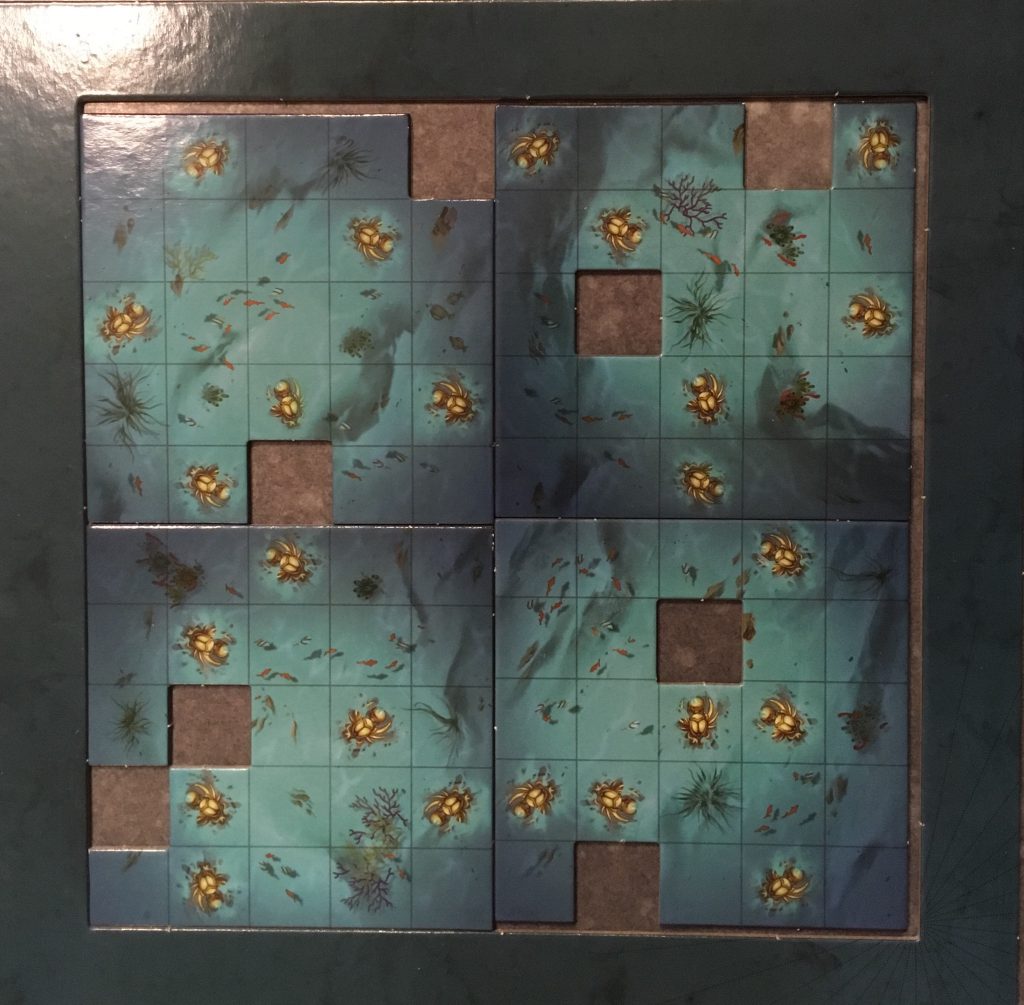
The other thing was that the rule book is not very clear as to the placement of enclosures. If you have someone teaching you the game then it is easily learned, but just from reading the rule book, it is not clear that you can only have Scarabs in enclosures of 4 or less in order to score. This can cause confusion and change strategy when misunderstood.
But these are really just minor quibbles. The gameplay is fast and satisfying. I found that most of the people I was showing the game to were done with their turns before I was.
Everyone plays together at the same time so there is basically no down time, making some plays of the game as quick as 15 minutes and none of them more than 30. We usually would play at least twice every time we brought it out.
It’s also very easy to teach, especially anyone who has ever played Tetris or Patchwork. The only sticking point is the enclosures, but that always resolved itself pretty quick.
The fact that you have the cards telling you which tiles to play ensures that everyone plays the same game and always makes sure no two games of Scarabya are ever the same.
All in all it’s a fast paced, very casual, very accessible game. It’s easy for first time gamers to catch on and I think it will easily fill a need for introducing games to non gamers. It’s going to stay in my gateway rotation for some time.
Ninja Approved.
